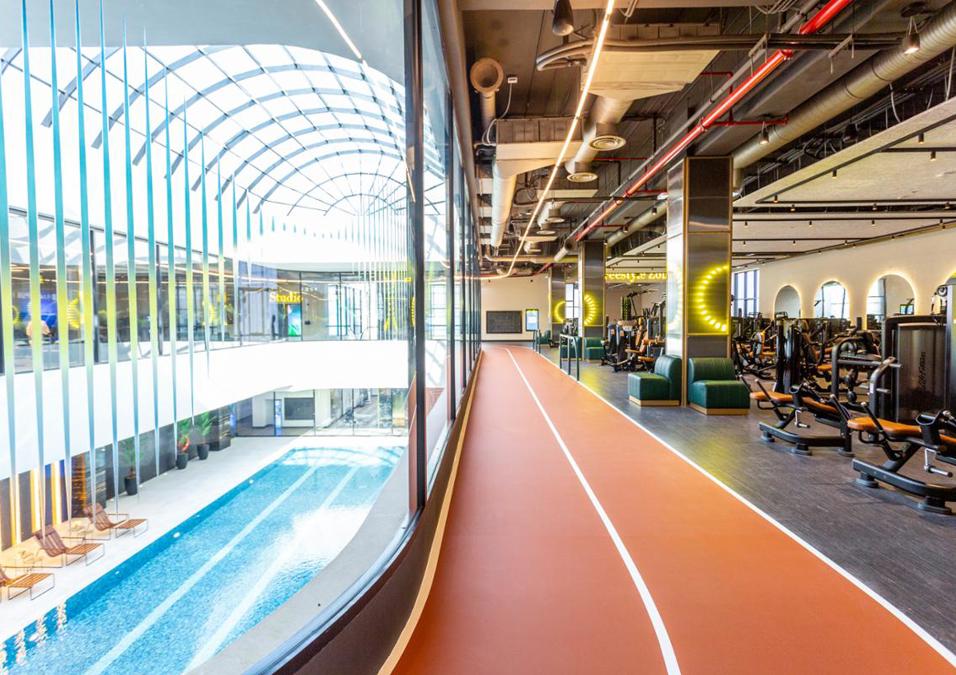Saudi Fitness Club Market: USD 702.38 Million in 2020

SIGN UP FOR YOUR FREE DAY PASS TODAY!
The COVID-19 pandemic significantly transformed the health and fitness club industry in 2020, leading to widespread closures globally, including in Saudi Arabia, to curb the virus's spread.
On May 12, 2021, Reportlinker.com announced the release of the report "Saudi Arabia Health and Fitness Club Market - Growth, Trends, Covid-19 Impact and Forecasts (2021 - 2026)" - [link].
Even in 2021, lockdowns due to COVID-19 resulted in temporary club closures in the country.
Despite the decline in revenues, some prominent companies managed to expand their operations during these challenging times, aiming to recover from the losses experienced in 2020.
Saudi consumers are increasingly willing to invest in health and fitness clubs, driven by the importance of health benefits.
The rise in health clubs and gyms offering personal training and cutting-edge fitness equipment is attracting more consumers, likely fostering market growth in the upcoming years.
The popularity of advanced facilities in fitness clubs, such as hot yoga studios, high-altitude training rooms, metabolic testing equipment, medical exercise areas, and day spas, is on the rise.
This trend is further bolstering market growth. Attractive membership fees and increased marketing expenditures are helping these clubs generate more revenue.
The demand for female-specific services and fitness centers is growing and is expected to continue this upward trend.
Key Market Trends
Increasing Popularity of Healthy Lifestyles
The trend towards healthier lifestyles is motivating Saudi consumers to join health and fitness clubs.
This shift drives the demand for advanced fitness equipment in these clubs, attracting more consumers.
Saudis are becoming more health-conscious and are making significant lifestyle changes. A survey in 2018 revealed that 25.81% of respondents in Saudi Arabia exercised 1-2 hours per week.
This awareness has led to substantial expansion in the fitness industry, driving market growth.
The increasing prominence of sports activities, celebrity endorsements, international sports events, social media influence, and various government initiatives encourage both men and women to participate in fitness and sports activities.
For instance, in February 2017, the Saudi Arabian government announced the opening of female-only gyms aimed at weight loss.
The growing popularity of fitness activities like aerobics, running, weight training, and yoga, along with more women participating in these activities, is driving market growth.
In 2019, Saudi Arabia had the second-highest number of gyms in the Middle East & African region, with 1,280 gyms, following Egypt.
Dominance of Membership Fees Sector
Three-month membership packages significantly contributed to overall revenue from fitness services in 2017, allowing consumers to experiment with various gyms and activities like yoga, Pilates, and mixed martial arts.
Gym memberships in Saudi Arabia typically require a commitment of three, six, or twelve months.
Major cities like Riyadh, Jeddah, Dammam, and Al-Khobar have become fitness service hotspots, with major brands operating or planning to establish branches.
These densely populated areas are commercial hubs and industrial centers with a high concentration of non-Saudi residents.
However, there is widespread dissatisfaction among women regarding gym membership prices, service quality, and limited policies.
Competitive Landscape
The health and fitness club market in Saudi Arabia is highly fragmented, with numerous private-label businesses dominating the scene.
Key players include Leejam Sports Company (Fitness Time), Fitness First, Lava Fitness, and Kinetico Ltd.
Other significant names in the market are Kinetico, Sweat Army, Fit Zone, and Interval Plus.
These leading companies are adopting various strategies to meet consumer demands and stay competitive.
A key growth strategy now involves leveraging social media platforms like Facebook for online marketing and branding, aiming to attract a larger customer base.
Source: finance
The opinions shared in the GymNation blog articles are solely those of the respective authors and may not represent the perspectives of GymNation or any member of the GymNation team.































































